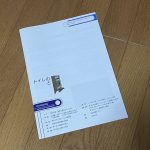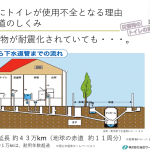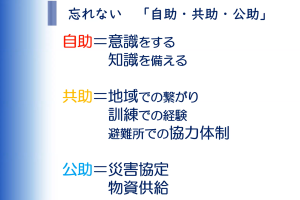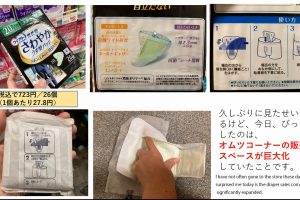The 21th seminar
“What can we do prepare for a disaster?” -2
– “Evolving Toilets” book series, volume 2 “Disasters and Toilets” edited by Japan Toilet Association
Japan Toilet Association (JTA) Seminar Series; “Let us know more about our Toilet Story”
Date: 9 February 2023 (Thu) 18:00-20:00 JST
Presenters:
Mr. Hironobu Niizuma (JTA steering committee member, Sogo Service Co., Ltd. Representative Director, and President)
Mr. Kan-ichi Adachi (JTA steering committee member, Excelsior Inc., Ltd. President)
Organizer:
Yoshihiko Kawauchi, Ph.D., JTA steering committee member, Former professor of Toyo University.
Terminology:
Each of the four types of toilets (Handy, Portable, Temporary and Manhole) described in this paper provides the following features.
– Handy toilet
It is a handy use toilet that is compactly packaged for use. It can be carried in a bag or pocket of the clothes. and used in the vehicle while a traffic jam or by setting it in a toilet bowl without the flush water at the incident of a disaster. Many handy toilet products are ingratiated about the storage methods and hygiene matters.
 |
 |
– Portable Toilet
A toilet bowl made of a plastic or cardboard which is quite light and easy to carry to install at a disaster. It can also be placed by the bedside of people who are difficult to walk to reach the toilet cubicle in the house. It is possible to place even in a small space. Many portable toilet products are ingratiated about the storage methods and hygiene matters.
 |
– Temporary Toilet
This is a temporary use toilet in a cubicle made of a metal, reinforced plastic, etc., and there is a sump under the toilet bowl. It is often used at a building construction sites, event venues, and the evacuation shelters at a disaster.
 |
– Manhole Toilet
It is a toilet mainly used at a disaster. The manhole cover lid of the sewage system is opened, and then a toilet bowl is placed over the hole covering with a tent for the blindfold.
 |
References: https://www.mlit.go.jp/common/001180224.pdf, https://excelsior-inc.com/products/hotilet.html
(Kawauchi) The Japan Toilet Association (JTA) published three volume books on toilets under the title of “Evolving Toilets” and the first book among them titles “Disasters and Toilets.” This is written mainly by members who belong to the disaster & temporary toilet study group in JTA. It was pointed out in the previous seminar that it is not possible to install the temporary toilets immediately at a disaster. Furthermore, it was said that there were still many crouching-style toilet bowls among the temporary toilets. This time, the presenters talked about what we should do as the disaster victims.
Part 1: Lessons learned from the past disasters and efforts by the national and local governments
(Niizuma) I am a member of the steering committee of JTA, and I am also a secretary of the Disaster and Temporary Toilet Study Group in JTA. There are three types of the help at a disaster: “Self-help” which means supporting by oneself, “Mutual help” where people around support each other, and “Public help” which is the supports by the national and local governments.
Secondly, recognize correctly the toilets are unavailable.
Toilets cannot be used not only when the water supply is cut off, but also when sewer water does not flow properly. Also, the modern toilets become unusable when the electric power goes out. The water supply stops in the flats during the electric power outage. In other words, it is necessary to understand that the toilet will become unusable when even one of the three major lifelines stops.
Thirdly, the excretion is a natural human phenomenon, however, the support from the national and local governments cannot be provided immediately.
Fourthly, it is possible to prevent toilet damage at a disaster by stockpiling toilets as a precautionary measure.
Fifthly, it is necessary to prepare not only for the earthquake countermeasures, but also for complex disasters such as the severe wind and overflood damage, infectious diseases, and volcanic eruptions, etc.
Sixthly, Self-help and mutual help are important to solve the toilet matters.
It is no point to wait for administrative and national help since people can’t stand excretion. You must manage yourself on the excretion.
 |
(1-1) The recent disaster toilet experiences in Japan
(1-1-1) The catastrophic Kumamoto Earthquakes (16 April, 2016, Magnitude 7.3)
The most main lifelines were damaged when catastrophic earthquakes happened. The toilet cannot be used spontaneously even only one of these three factors; water supply, sewerage, electricity stops. Five manhole toilets were installed behind the gymnasium at the evacuation centre at the elementary school in Kumamoto City. One of them was the wheelchair accessible. However, many insects entered through the gaps of the blindfold tent. There were not only the flies but also bees. The insect repellent measures were also recognized as an issue.
The temporary toilets were installed at one evacuation centre, but most of them were crouching-style toilets. The government distributed the attachments that can be used by sitting on the crouching-style ones. They would walk on newspaper soaked with the hypochlorous acid or other antiseptic solutions to disinfect the soles of their shoes as the hygienic measure, for returning to the evacuation centre after using the toilet outside.
Some people hesitated to eat or drink in order to refrain from going to the toilet at the disaster, and as a result, some people became ill eventually. There were many aftershocks at the time of Kumamoto earthquakes. Many people spent in their own cars at night and they suffered from the economy class syndrome because they didn’t take enough waters.
The government provided push-type assistance at Kumamoto earthquakes as the first experience. Push-type assistance means that the government sends relief supplies without any requests from the disaster areas. The handy toilets, portable toilets, and toilet papers were supplied. The temporary toilets were installed on the second or third day after the disaster at Kumamoto earthquakes, which was consequently a quite prompt response. 200,000 portable toilets including the handy toilets were provided. Furthermore, 1,000 temporary toilets were provided.
(1-1-2) The catastrophic East Japan Earthquakes (11 March, 2011, Magnitude 9.0)
The water supplies were cut off for 2.3 million households. More than 120 sewerage facilities were shut down. More than 1,000 km of sewer pipes were damaged. 8.5 million homes lost the electric power at the catastrophic East Japan Earthquakes. The Ministry of Education, Culture, Sports, Science and Technology inquired the evacuees about the problems in the evacuation centres facilities. The highest 74.7% of them was the toilet problems. The second was 70%, about the heating equipment and the third was 66.7%. about the water and supply equipment. The excretion is something that humans cannot hold, so it becomes an acute problem from the just moment when they evacuate. The temporary toilets were installed because the toilets in the building could not be used properly. However, the filth tanks were full momentarily and left until cleaned.
The handy toilets were also used, however after use, it must be disposed as a garbage. It must be difficult to find a place to throw it away when there is scarcely collection service of it. There are four types of the disaster toilets: the handy toilets, portable toilets, temporary toilets, and manhole toilets. It is necessary to use them in combination since there are good and bad points among them. The hygienic environment may become extremely unhealthy when the temporary toilets are installed at the next to the evacuation centres without well consideration. The location where the ground liquefaction occurred, the manholes jutted out of the ground and the sewers became impassable. The earthquake and tsunami damaged the sewage treatment plants and made it impossible to treat the sewage in many locations.
(1-1-3) The catastrophic Hanshin-Awaji Earthquakes (17 January, 1995, Magnitude 7.3)
There were many problems with toilets at the catastrophic Hanshin-Awaji Earthquakes. Unfortunately, little improvement has been made to toilet matters although there are 16 years between the catastrophic East Japan Earthquakes and Hanshin-Awaji one. We tried to take various measures, but we could not make much progress.
(1-1-4) The toilet situation under the severe rain (Western Japan severe rainfall on 28 June, 2018) (Typhoon No. 19 on 12 October, 2019)
The full mud flowed into toilets and made them unusable at the 2018 severe rainfalls in western Japan or Typhoon No. 19 in 2019. The toilets cannot be used although the pipes are not broken like during the other earthquakes. The Japanese Cabinet Office published a chart of the damage caused by the water outages and the electric blackouts. The electricity was relatively restored quickly, while the water and sewage systems recovery took long to restore.
520,000 households lost power at Typhoon No. 19 in 2019. It recovered quite rapidly and they decreased about 200 households in a week. Whereas, the number of the water outages was 153,000 at the beginning, but 42,000 households were still without water even after 10 days and the number decreased to about 5,000 during fortnight. Usually, it takes long time to repair the water and sewage systems by digging the ground as the road construction. We assumed so far that earthquakes are the main disasters in the case of Japan, but in recent years the disasters of the storms and floods also increased. Even if the storms and floods occur, the toilets must be also damaged. In addition, it is necessary to prepare for complex disasters, such as infectious diseases and volcanic eruptions, where many various types of the disasters strike at the same time.
(1-2) The overview of Japanese government plans
(1-2-1) The toilet at the national disaster damage in the plan
The Japanese government assumes all regions from Kanto to Shikoku on the Pacific coast will have a hidden high risk of the big earthquakes. 34.4 million people must face without the water, and it will take about 60 days to restore it according to the Japanese government’s predictions when Nankai Trough earthquakes occur. 14.4 million people will experience water outages if the earthquakes directly hits Tokyo metropolitan region. This affected 30% of the population of the region and took at least 30 days to recover. The various measures are necessary since the toilet is essential and necessary.
The next is the sewerage failure.
It is predicted that 32.1 million people will be unable to flow water due to the sewage damage when Nankai Trough earthquakes may occur. 1.5 million people will be affected and the recovery would take more than 30 days by the earthquakes directly hits over Tokyo metropolitan region.
Final issue is the electric power outages.
The water pumps will not be able to push the water to the higher-level story of the building and the toilet bowls required the electricity for the flushing cannot use. 27.1 million households must experience the power outages at Nankai Trough earthquakes. 12.2 million households which is 50% of the population in the area will lose electric power and it will take about 30 days to restore it at the earthquakes directly hitting Tokyo metropolitan region. It is assumed that Nankai Trough earthquakes will cause a shortage of 97 million toilets in the first four days after the occurrence of the megaquake. The earthquakes directly over Tokyo metropolitan region would result in a shortage of toilets for 32 million toilets.
This is a shortage number of the push-type support by the government in four days during the fourth to seventh day soon after the disaster. Converting this to a week’s worth, there must be a shortage of 170 million toilets in the seven days at Nankai Trough earthquakes. The portable toilet manufacturers got together and calculated about four years ago that how many they could gather them. Then, it turned out 6.8 million doses were insufficient. That is far insufficient. In the same way, 56 million doses would run short in one week when Tokyo metropolitan region earthquakes would be hit. The toilet manufacturers will gather only 6.8 million doses for the push-type support, and 49.2 million doses are short eventually. This means it is essential to stockpile handy or portable toilets in each household. A survey of household stockpiles reveals that 60% of the water and 47.6% emergency food, but only 19.5% stockpile toilets for the future disasters.
(1-2-2) The preliminary measures for the toilets by the national and local governments
The Japanese Cabinet Office has created “A Guideline for securing and managing toilets at the evacuation centres.” This is a first guideline on securing and managing toilets at the evacuation centres, concerning about the issues to be addressed by the government to support the evacuees. It is written that consideration should be given to four elements: “Safety”, “Hygiene and comfort”, “Care for the women and children”, and “Care for the elderly people and people with disabilities” for securing and managing toilets at a disaster. The toilet becomes a unsafe place even one of these is omitted.
There are four types of the toilets at a disaster.
[Handy toilet] This toilet can be used indoors. Some can be used putting it over existing toilet bowls.
[Portable toilet] This toilet can be easily used with simple assemble method.
[Manhole toilet] Install over an earthquake-resistant manhole. There is a guideline by the Ministry of Land, Infrastructure, Transport and Tourism.
[Temporary toilets] Nowadays, this type of the toilet is increasing to be used comfortably even at a disaster.
The Ministry of Land, Infrastructure, Transport and Tourism recommends to use them in combination since each of these four type toilets has advantages and disadvantages. The evacuate people may use the handy toilets and portable toilets in the immediate aftermath of a disaster. Then the manhole toilets are assembled and increase about one day after the disaster. The temporary toilets must begin to be provided after the third day and then use of the handy toilets and portable toilets gradually decreased. The standard person uses the toilet five times a day according to Japanese national guidelines. The number of the temporary toilets and manhole toilets was assumed to be one per 50 evacuees just after the disaster. After that, it is said to be one for about 20 people, when the evacuations are prolonged.
(1-2-3) Japanese toilet measures at a disaster by the national government
The catastrophic Kumamoto earthquakes were the first experience of the push-type support activated. In the past, when a disaster occurred, each municipality requested the necessary items to each prefecture, and then it requested to Japanese national government. It took quite a while because the Japanese national government starts to supply after requested from the prefectures, and they supplied them to the municipalities. It took one week after the requests from the municipalities to reach the location supplying temporary toilets at the time of the catastrophic East Japan Earthquakes. Therefore, the system was improved so that the Japanese government would make a list of supposed necessary items in advance and supply them without waiting for the requests from the municipalities. This is called push-type support.
The Japanese government will supply 97 million push-type portable toilets within 4 to 7 days after the disaster if Nankai Trough earthquakes happen. Similarly, it will supply 32 million push-type portable toilets within 4 to 7 days after the earthquakes directly strikes Tokyo Metropolitan region disaster. In addition to these plans, the government requests the citizens to stockpile the daily necessities such as the water, food, and handy or portable toilets for at least three days to one week preferably.
(1-3) Finally, “Things what we can do? “
1. Recognize the damage assumptions and national countermeasures for the various disasters.
2. Understand the mechanism how the toilets become unusable.
3. Recognize once again that the excretion is an unavoidable physiological human phenomenon that cannot be held long.
4. Stock the emergency toilets to endure for at least three days, preferably seven days as a precautionary measure.
5. Prepare for the multiple complex disasters such as the earthquakes, severe wind and flood damage, infectious diseases, and volcano eruptions, etc.
6. Collaborate with self-help and mutual help since the toilets by public-help will take time to be provided.
Part 2: Self-help for a toilet
(Adachi) I am a member of the steering committee of JTA. I am also a deputy secretary of the Disaster and Temporary Toilet Study Group, the group leader of the handy and portable toilet group, and the leader of the working group. We conduct a questionnaire survey on the stockpiling emergency toilets every three years. A total of 1,000 people were participated in 2020 of 100 people in each of the 10 prefectures where the Nankai Trough earthquakes and Tokyo metropolitan region earthquakes are predicted to cause the catastrophic damage.
(2-1) The survey about the stockpiles for the disasters
72.3% of households stock flashlights, 60% water, and 50% emergency food and radios. However, the disaster toilets stockpiles were only 19.5%, which is about one out of five houses keep them in 2020. This is just a little 4% increase from 2017. The next survey is to be planned in the year of 2023.
(2-2) The toilet unusable period after the earthquakes
The toilets cannot be used not only by the earthquakes, but also by the floods caused by the typhoons and torrential rains. I have heard that it was out of service for about a month after Kumamoto earthquakes. It was also out of service for several months in some areas after the catastrophic East Japan Earthquakes.
A large impact occurs when a sewage treatment plant is damaged. It took about 120 days to fully recover at the catastrophic East Japan Earthquakes. In fact, many sewage treatment plants are built close to the seashore. Therefore, it may happen that the sewage cannot be discharged when a tsunami or storm surge hits there, even though there is no flood damage in the mountainous area. The municipalities keep the stockpiled various types of the handy toilets and the portable toilets. However, they are totally insufficient. In conclusion we must prepare to keep them by ourselves, as self-help becomes quite important now.
(2-3) The accumulated excretion volume is tremendous
If you go to the toilet five times a day, a family of three will go to it 45 times in three days and 105 times in one week. If sewage cannot become to be flushed, the excreta will be left until the garbage collection service resumes. The total family of three saves up a month’s worth of the excrement which is about the same size of a full bath tub size. Whether the garbage collection service will recover is a very difficult problem. If the earthquakes directly hit the metropolitan area of Tokyo, it is predicted that the amount of garbage will be 20 times more than the amount disposed whole a year. We can’t imagine how long it would take to clean up the total amount, as the garbage incinerator may also be affected. The manhole toilets and temporary toilets cannot usually be installed immediately. In other words, we must do something by ourselves from the beginning of the disaster until the support by the government provided.
(2-4) What to do when there is no stockpile of the handy or portable toilets
[Flush when the sewage can be use]
When flushed with about 2 liters of water, it looks like the excrement has disappeared, but in fact it is blocked in the pipe. Normally it cannot be discharged to the main pipe with more than 5 liters with the flush water.
[Use the plastic bag and newspaper]
You can make modification on the toilet with the plastic bags and newspapers. However, these days plastic bags are not free and there are not many plastic bags in the home as before. What is more, many families gave up to subscribe the newspapers anymore recently.
[Use the pet sheets]
The pet sheets are not recommended because they can adequately process the amount of the excretion since cats and dogs urinate relatively less than humans.
[Use the adult diapers]
There must be no supply of the adult diapers at home otherwise there is no one to receive nursing care. It seems to be effective of the water absorption, but there occur the garbage problems afterwards. It may be reasonable to use the diapers in toilet bowls during the water supply has been cut off.
Please stockpile the handy toilets and portable toilets since these methods introduced above are not always effective,
(2-5) Differences between the portable toilets and handy toilets
The Portable toilets are made of the cardboard, plastic or metal with the seat. The portable toilets can be stored compactly. The first step is to assemble them. Place a plastic bag in the assemble bowl to excrete, and when finished, sprinkle the included processing chemicals. Then tie up the bag. This portable toilet must be usable while the toilet at home becomes unusable. It can also be a toilet at the evacuation centre in a complementary perspective. The handy toilets do not hold the toilet seats. A plastic bag or sheet will be covered over the toilet bowl without the flash water.
After that, sprinkle the processing chemicals and tie up the bag. The chemical coagulates the moisture, but some products lack the amount of it. The solidifies for the water is relatively well, but the urine is a mixture of various substances with highly concentrated, and its ability to solidify is less than that of the water case. Furthermore, it may happen to reform to a liquid even if this coagulant once solidifies when the storage time is too long. There is also a seat type handy toilet. This is bag-shaped and fits in the portion of the toilet bowl where the water presents. Open the bag wide and set it so that it wraps around the toilet bowl edge. A processing chemical is set at the bottom of the bag, and immediately after excretion, put it in the bag. The action of sprinkling the processing chemical after excretion becomes unnecessary as this is set in advance for an elderly people or a child excretes.
Most of the processing chemicals are powders but some are tablet types as well. Firstly, set the tablet in a plastic bag and then excrete on top of it instead of putting the processing chemicals after excretion. It may not be applied well when putting the processing chemicals after excretion bothering by the toilet paper. Some handy toilets include a poncho that covers the body and can be used outdoors.
(2-6) How to purchase the handy toilets
We are often asked where to purchase the handy toilets in our triennial survey. The relatively common answers were that they are available at the home centres and Internet. The number of cases via Internet has increased significantly according to the survey in 2023. In addition, there are answers that they bought it by mail order or COOP or gifted.
(2-7) The reasons for the stockpiling emergency toilets
When we asked the reason why they will stockpile emergency toilets, the most common answer of 58.5%, was anxiety. Others answered that they saw it on TV or that they were urged by a family or friends. 53% said they started stockpiling emergency toilets because they felt worry about the catastrophic East Japan Earthquakes. It must impact severely since only 16.9% of the respondents had stockpiled supplies before the disaster.
(2-8) Summary
It is important to investigate the actual situation in the community when considering the preparation of toilets at a disaster. For instance, plan the location where to install a manhole toilet, who will keep the key to the disaster prevention warehouse, and who decides to install the toilet. These issues are not sufficiently determined yet. It is necessary to assign persons who will be responsible at the disasters in each area in advance. I think it is also necessary to think about the responsible persons in charge of the toilet matters at the disaster in the local government level or the evacuation centre. When we asked those who have stockpiled handy toilets whether they had an experience to have used them in real, and more than 80% answered that have never used it, and 30% had never even read the instructions to use. Some elementary schools hold overnight training at the evacuation shelters, and it might be a good idea to do experiment the use of handy toilets there. I heard that local governments install and let use the manhole toilets at the events, festivals, or marathon competitions. I think it would be useful experience for everyone to think about self-help and mutual help about the toilet at a disaster in advance to experience.
Another problem is the disposal of the handy toilets and portable toilets after use. It becomes a problem where to put them in your own home or neighborhood, if the garbage collection service does not recover soon after the disaster. This is also a big problem in the housing. complex. The problem of odors and infectious diseases becomes particularly serious in summer. Why is the toilet stock rate lower than the emergency food? I think this is because many people will expect that toilets at a disaster must be normally provided by the local governments. In fact, it is very difficult for the local governments to prepare toilets for all households promptly in a short period of the time. Therefore, it is very important to prepare it by ourselves in advance. JTA recommends to stockpile the handy toilets for about one week’s endurance. I shall recommend we should stockpile more amount.
(3) Part 3 Q&A
(Q1: HO) I think the convenience store toilets are useful at a disaster, but is there anything the store itself should be prepared in case of the disaster, provided if it does not too much burden for the owner?
(A1-1: Niizuma) The supply conditions of the water, sewage, and electricity depend on the area where the convenience store is located. For example, the store itself in Tokyo Station may be safe because the building itself is earthquake resistant, but the water may not come out to flush. Of course, it is good idea to store some waters as a countermeasure, but it is also necessary to stockpile handy toilets or portable toilets. Alternatively, I think the stores may keep a manhole toilet or the temporary toilets. I think that the owners and facilities of each store should consider about how to deal with the four types of the toilets.
(A1-2: Adachi) The backyard of the convenience store is normally limited, and it is not enough space to stockpile. Many stores refused to let use their toilet in the store during the COVID-19 pandemic, because they have no idea what kind of infectious disease it was. Considering this, I feel that it would be good idea if JTA will make a standard from an operational perspective to the convenience stores, such as they can let us use their toilets in such a case or not.
(A1-3: Niizuma) One convenience store group keeps one portable toilet in each store. I think only one portable toilet must be running out soon, and I am afraid the stores will not be able to let the toilets use soon because the number of toilets is limited and the backyard is small.
(A1-4: Adachi) If each individual puts at least one portable toilet in the own bag, it can be used outside as a self-help measure.
(Q2: NO) Who and where to request to collect the filth of the temporary toilets?
(Kawauchi) This must be done by the local government. However, it fully depends about the time. The local government must not be able to afford it soon, and it cannot come immediately even if you may ask.
(A2: Adachi) The sump lorries are decreasing in Japan as the flushing system is over taking. Therefore, I think it will be difficult to clean the temporary toilets sufficiently pumped up.
(Q3-1: HI) Please inform me about the expiration period of the coagulant.
(A3-1: Adachi) I think it depends on the product of each manufacturer.
The durability of plastic bags containing the chemicals is limited. My company’s products indicate the stockpile expiration date.
(Q3-2: Kawauchi) Does it means that it may return to a liquid form over time even if the material is solidified with a coagulant at first?
(A3-2-1: Adachi) The effect of the coagulation may be the solubilization state in only one day in the worst case.
(A3-2-2: Niizuma) There are various types of the coagulants.
(Q3-3-1: Kawauchi) However, I don’t think it’s written in the catalog how long the coagulant can last.
(A3-3-1: Adachi) There is a relation between the more absorbed water and the less solidifying time.
(A3-3-2: Niitzuma) I think it’s a good idea to buy just one at first and try to use. Then check its performance and stockpile more, because you can’t tell the holding capacity of the coagulant until you use each product.
(A3-3-3: Adachi) There are aerobic and anaerobic bacteria in the excrements, so the odor and the gas are generated on a warm place in the summer. It may happen to explode by the methane gas generated.
(Q4: KA) Can septic tank be used even at a disaster provided there is supplied the electricity?
(A4: Niizuma) If the long drainage pipes from the toilet bowl to the treatment plant are not all robust, there is an anxiety that the sewage system will not be able to drain. The septic tank is basically placed in the area where you live with a relatively short drainage pipe. If you check the drainage pipe and the electricity are well, you can use it. The septic tank industry has been promoting its advantage against the disasters.
(C4: Kawauchi) Japanese small septic tanks are very high performance. However, the government recommends a method of endlessly flowing downstream through sewers for some reason. Although, there are many cases in which a small independent system is more resistant to the disasters.
(C5: MU) I saw a 20-liter plastic tank filled with water marked for the emergency in the toilet of a hotel room. The plastic tank was also placed in each toilet in the public spaces such as the lobby to be used as an emergency water to flush.
(A5-1: Adachi) I feel it is a little unkind as it doesn’t mention how many liters of water you must flush or how many times this tank can be used in the toilet.
(A5-2: Niizuma) I think it’s an advanced measure, but the required amount of water to flush varies depending on the toilet bowl.
(Q5-3: Kawauchi) Pouring from a small outlet of the plastic tank would not be efficient because it cannot pour well to flush a large amount of water at once.
(A5-3:-1 Adachi) There remain various operational issues such as the difficulty to hold a heavy 20-liter tank by a woman.
(A5-3-2: Niizuma) I think just setting a water tank is not good solution. Each hotel should check whether all the drain pipes are fit and the sewage treatment plant is functioning well before discharged.
(Q6: MI) Is there any worry that the plastic bag of the handy toilet may burst and the filth may leak out from the garbage lorry?
There is another anxiety that the road will be littered with the firth from the drain holes of the garbage lorry.
(A6-1: Adachi) I think this is one of the important points. However, I don’t know well about the structure of the drainage holes in the garbage lorry. There are two methods regarding the collection way of the handy toilets by the municipalities. Someone requires to indicate “Handy toilet included” on the top of the garbage bag. The others permit to mix it with the ordinary garbage.
(A6-2: Niizuma) The Ministry of the Environment says that the handy toilets should be deposed separately from the total disaster waste. In a mean time, some municipalities will begin to dispose of the handy toilet separately from other waste. In fact, this problem is happening in many places. This causes a big problem in many municipalities that the garbage that does not solid coagulation perfectly, exploded and splashed onto the garbage collection staff. Such a problem may occur eventually by the solid coagulation performance over a handy toilet or a portable toilet.
(C7: Kawauchi) The garbage collection gradually starts after the urban functions suddenly stop due to a disaster. The handy toilets which were piled up in each household must be disposed massively at the restart of the collection. There is concern that this could be sanitary problems for the collector. In the past, the disposable diapers have burst while being compressed in the garbage lorry, and the half-dried, powdered filth fell on the collection workers who may be inhaled and infected. If only the handy toilets are collected separately from the general garbage collection, the workers will be protected.
(A7: Adachi) The handy toilets make the temperature of the incinerator drop because containing a lot of liquid. It is necessary to consider the ratio of the ordinary paper waste and the portable toilets from the standpoint of incinerating. However, the foul odor emanates from the collected handy toilets, causing complaints from nearby residents if a temporary storage space for the handy toilets is in the incineration plant. Both the environmental department and the disaster prevention department the government office face in the same troubles, but there is not enough mutual communication between them.
(C8: Kawauchi) If we recognize the detail situation of toilets at the time of a disaster, we can decide whether to take out all the used handy toilets accumulated in our house at once when the garbage lorry comes, or take them out little by little while considering the load of the garbage lorry and the incinerator. I think it is important that more people know in detail what happens to the toilets at a disaster.
(A8: Niizuma) First of all, we should know the scale of the disaster in the area. It will be necessary to know exactly how many lifelines such as the water supply, sewage, and electricity have been stopped and how many days it will take to restore them. The predicted information from the municipalities must already be released. and take measures for the toilets, and you can consider about other disaster measures in relation to it. I believe so long as we can take measures for the toilets, we will be able to prepare the overall disaster countermeasures.
(C9: Adachi) I would like to allege that a top-quality handy toilet must be expensive. The cheap ones still must undertake some problems. However, the procurement price by the municipality is always too cheap, and is set at about one-tenth of our product cost eventually. If it is an original excellent product, the smell is relatively suppressed and it is quite hygienic.
(C10: Kawauchi) We are afraid of the disasters to happen, but it surely occurs someday. In that case, the food supply is one problem, but we learned today that toilet matters will also be a very serious problem.










